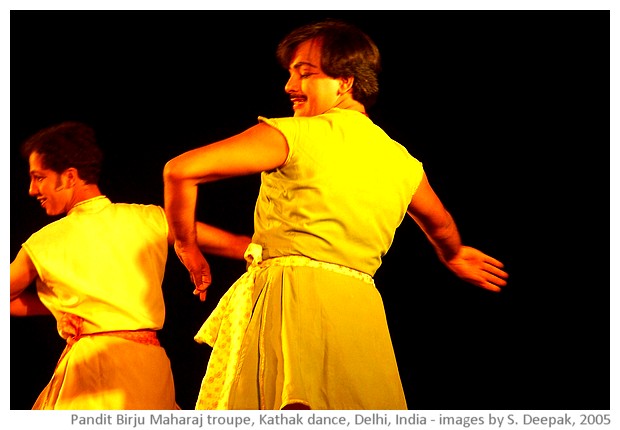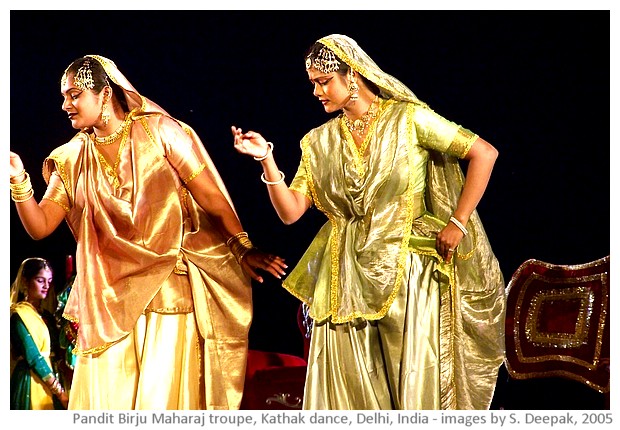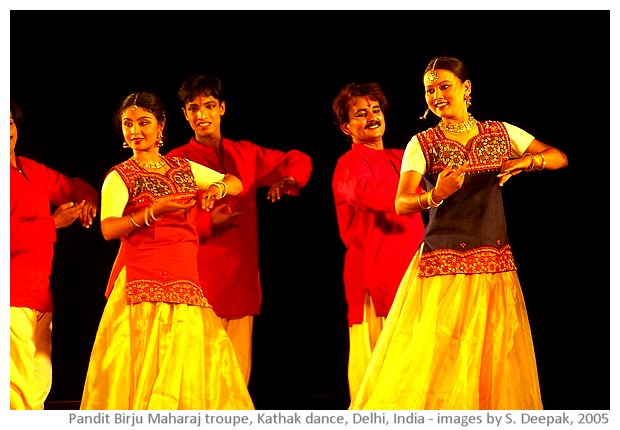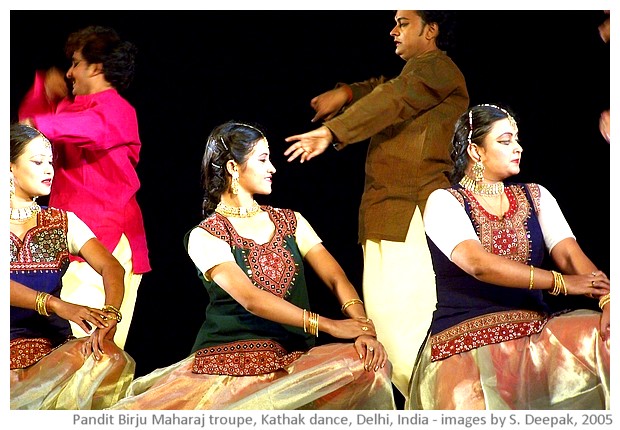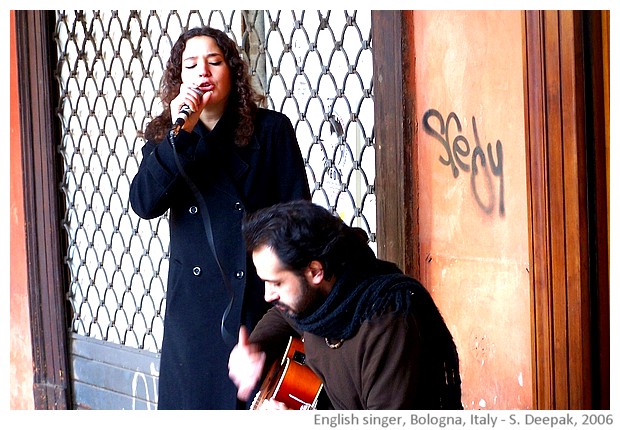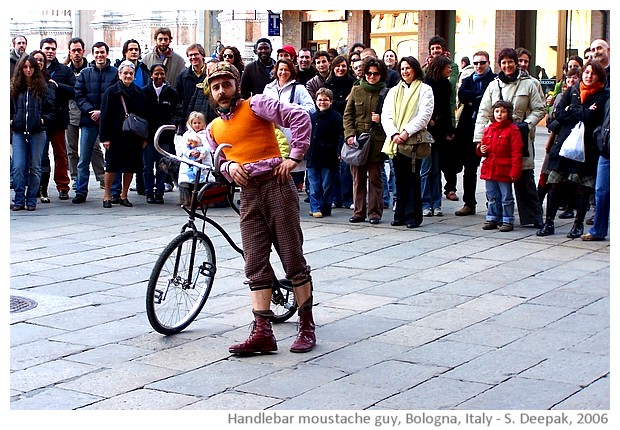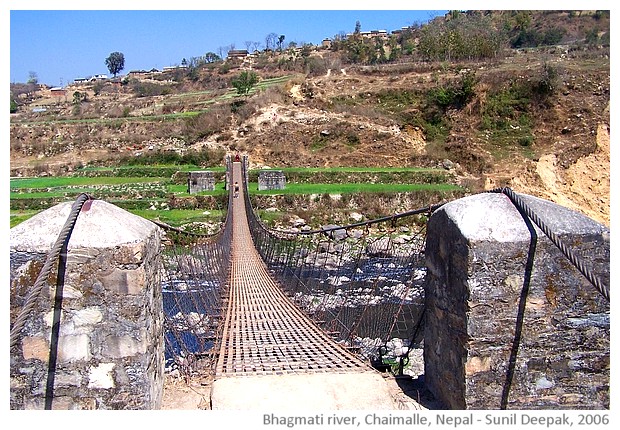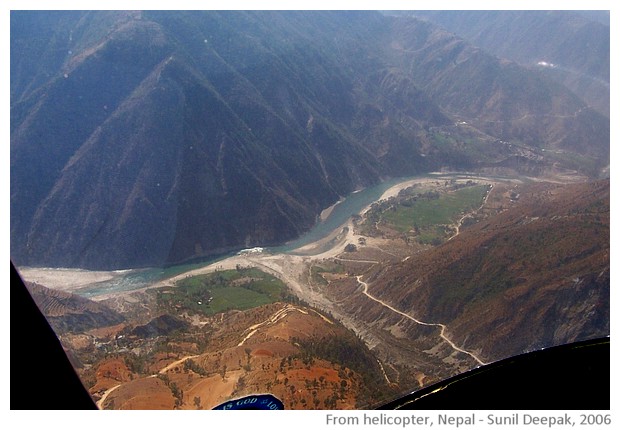The angst for the far away homelands that emigrants carry in their hearts has been a constant theme for films, fiction and memorials, especially over the past couple of decades as globalization has spread. "Immaginary Homelands" by Salman Rushdie (1992) was part of expressing this angst. Pico Iyer's talk "Where is home" on TED is another articulation of the feelings of rootlessness. Pico explains that rootlessness is not just angst, it can also be a pleasure, freeing you to decide and choose your homelands.
If you have not yet watched Pico's talk, I strongly recommend it. He is a wonderful speaker with an evocative style.
Pico's talk has two main threads that he uses to weave a word-web of memories, experiences and emotions. First thread is a question asked by others, "where are you from?", and the second is about our own feelings of what defines a home for us. In his talk, Pico often moves between these two threads, implying that both are inter-related.
After watching his talk, I kept on thinking about it. My feeling is that the two threads are not really inter-related in the way Pico seems to suggest. If I ask myself Pico's question, "where is home?", I would not think of the question, "where are you from?", I would ask other questions.
WHERE ARE YOU FROM?
It is the question asked by the new "others", often when we meet them for the first time.It is probably as old as the times when humanity started its journey from Africa and spread to different parts of the world.
In most parts of the world, before the industrial revolution and urbanization, only a tiny percentage of persons ever left the places where they were born. In their life times, at the most they could have hoped to make a few trips to the nearest town. Almost invariably, people married persons from the same region, if not the same village. They spoke the same languages, ate the same food, prayed to the same gods and celebrated the same festivals.
This belonging to the the "birth-place" found common expressions. For example, if Indian traditions forbade crossing of the seas, Italians had sayings like "Moglie e buoi dei paesi tuoi" (Wife and buffaloes should be from your same village). I am sure that different other cultures had similar ideas.
Thus, in those times, when you met new persons, it made sense to ask "where are you from?", because you knew everyone there was to know and you rarely met new persons. With this one question, you were asking many different questions - to which place do you belong? where were your mother and father born? which city/village is linked to your family?
Today the world is profoundly different. Often you do not have the time to listen to the complicated answers to the question "where are you from" and it does not make any difference to you.
Today, even if you never leave your home country, internal migrations are a constant part of urban lives and increasingly, even the rural lives. More than ever before in the history of humankind, people from different cities can get married, have children in different cities, send those children to schools and colleges in different cities, and find work and move to different cities in their life times. Thus, emigrants or natives, it has become harder to answer this question "where are you from?".
You no longer have the name of one place to answer this question. You may need to give long and complicated answers describing your shifting home-cities. I think that most of Pico's talk is about this question. The question of "belonging".
But is this question really about the place identified by your heart as your home, as Pico suggests in the second thread of his TED talk? Not for me.
HOMES OF THE HEART
In his talk, Pico mentions different places, buildings and countries where he has lived at different times in his life. He talks of his schooling in Britain and university in the USA. He also talks of his love for Japan and the burning of the family house in California that had "set him free".
However, people seem to be missing from Pico's world. While he talks of his grandparents' house, he never talks of his grandparents themselves. He never mentions his mother or father or siblings or cousins. He does not talk of his wife, his children. There are no friends of his heart in his speech.
And while reflecting over his talk, I asked myself, how can we talk of our home, without talking about the people we love?
When I had left India, my home was mainly in Delhi, in the rented house where my mother had lived. But parts of my home were also with other family members and close friends. In the past three decades, as our family has spread to different parts of India and some persons have emigrated to other countries, parts of my home have also spread with them. My feelings of "home" are linked to my family.
Over the years, the memories of the intense friendships of adolescence have dimmed and none of those childhood friends is active on the social media or even emails so our contacts are rare - thus today I am not so sure how strong are the links between them and my "home" feelings.
As long as my mother was alive, my strongest feelings of home continued to be linked to her. Today, while I sit in Bologna (Italy) and talk to my sisters on telephone, one in USA and the other in India, I feel at home in that moment. Their voices, and our shared memories are my home.
The voices of some of my cousins are also indelible part of my "home" feelings. Even just to think of them, makes me feel at home.
And, I have my new home, linked to my wife and my son. Strangely, though I have lived for more than two decades in Bologna and we own a house here, in Italy my feelings of "my home" are stronger towards Schio, the town of my wife's family - again, I think that this feeling has something to do with close family members and not so much with the cities themselves.
So, for me, the place that I feel in my heart as my home, has to do with my emotions - feelings of family, love, affection, friendship - and little to do with geography or other things.
And for you, where is the homeland of your heart?
***
Pico's talk has two main threads that he uses to weave a word-web of memories, experiences and emotions. First thread is a question asked by others, "where are you from?", and the second is about our own feelings of what defines a home for us. In his talk, Pico often moves between these two threads, implying that both are inter-related.
After watching his talk, I kept on thinking about it. My feeling is that the two threads are not really inter-related in the way Pico seems to suggest. If I ask myself Pico's question, "where is home?", I would not think of the question, "where are you from?", I would ask other questions.
WHERE ARE YOU FROM?
It is the question asked by the new "others", often when we meet them for the first time.It is probably as old as the times when humanity started its journey from Africa and spread to different parts of the world.
In most parts of the world, before the industrial revolution and urbanization, only a tiny percentage of persons ever left the places where they were born. In their life times, at the most they could have hoped to make a few trips to the nearest town. Almost invariably, people married persons from the same region, if not the same village. They spoke the same languages, ate the same food, prayed to the same gods and celebrated the same festivals.
This belonging to the the "birth-place" found common expressions. For example, if Indian traditions forbade crossing of the seas, Italians had sayings like "Moglie e buoi dei paesi tuoi" (Wife and buffaloes should be from your same village). I am sure that different other cultures had similar ideas.
Thus, in those times, when you met new persons, it made sense to ask "where are you from?", because you knew everyone there was to know and you rarely met new persons. With this one question, you were asking many different questions - to which place do you belong? where were your mother and father born? which city/village is linked to your family?
Today the world is profoundly different. Often you do not have the time to listen to the complicated answers to the question "where are you from" and it does not make any difference to you.
Today, even if you never leave your home country, internal migrations are a constant part of urban lives and increasingly, even the rural lives. More than ever before in the history of humankind, people from different cities can get married, have children in different cities, send those children to schools and colleges in different cities, and find work and move to different cities in their life times. Thus, emigrants or natives, it has become harder to answer this question "where are you from?".
You no longer have the name of one place to answer this question. You may need to give long and complicated answers describing your shifting home-cities. I think that most of Pico's talk is about this question. The question of "belonging".
But is this question really about the place identified by your heart as your home, as Pico suggests in the second thread of his TED talk? Not for me.
HOMES OF THE HEART
In his talk, Pico mentions different places, buildings and countries where he has lived at different times in his life. He talks of his schooling in Britain and university in the USA. He also talks of his love for Japan and the burning of the family house in California that had "set him free".
However, people seem to be missing from Pico's world. While he talks of his grandparents' house, he never talks of his grandparents themselves. He never mentions his mother or father or siblings or cousins. He does not talk of his wife, his children. There are no friends of his heart in his speech.
And while reflecting over his talk, I asked myself, how can we talk of our home, without talking about the people we love?
When I had left India, my home was mainly in Delhi, in the rented house where my mother had lived. But parts of my home were also with other family members and close friends. In the past three decades, as our family has spread to different parts of India and some persons have emigrated to other countries, parts of my home have also spread with them. My feelings of "home" are linked to my family.
Over the years, the memories of the intense friendships of adolescence have dimmed and none of those childhood friends is active on the social media or even emails so our contacts are rare - thus today I am not so sure how strong are the links between them and my "home" feelings.
As long as my mother was alive, my strongest feelings of home continued to be linked to her. Today, while I sit in Bologna (Italy) and talk to my sisters on telephone, one in USA and the other in India, I feel at home in that moment. Their voices, and our shared memories are my home.
The voices of some of my cousins are also indelible part of my "home" feelings. Even just to think of them, makes me feel at home.
And, I have my new home, linked to my wife and my son. Strangely, though I have lived for more than two decades in Bologna and we own a house here, in Italy my feelings of "my home" are stronger towards Schio, the town of my wife's family - again, I think that this feeling has something to do with close family members and not so much with the cities themselves.
So, for me, the place that I feel in my heart as my home, has to do with my emotions - feelings of family, love, affection, friendship - and little to do with geography or other things.
And for you, where is the homeland of your heart?
***





























